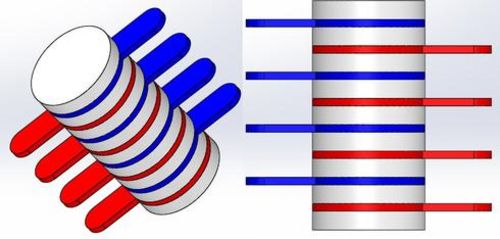Evaluating Electroactive Polymer Actuators for the use in a seat cushion
Kevin Alexander Stevenson

Patients who are bound to a wheelchair or bed, especially those with spinal cord injuries, often suffer from decubitus ulcers or pressure sores with great detrimental effects to their quality of life and productivity. This subset of people is most affected by pressure sores, up to 85 % of these patients suffer from decubitus ulcers at least once in their lifetime, because due to their spinal cord injuries they lack feedback from their bodies regarding pain and do not perform sufficient pressure relief movements.
In addition to a better lifestyle for any individual at risk from pressure sores, improving the prevention of decubitus ulcers also bears the potential cost reduction in the health care sector. An interesting option to provide such an improvement is an intelligent seat cushion, which is capable of measuring the pressure distribution and then use this information to perform some form of pressure relief.
 Figure 1: Example of a single layer electroactive polymer actuator, with no voltage applied (left) and voltage applied (right)
Figure 1: Example of a single layer electroactive polymer actuator, with no voltage applied (left) and voltage applied (right)
 Figure 2: Example of a stacked actuator, red and blue parts are visualizing the electrodes and how they need to be assembled in order to ensure the specific layers are electrically in parallel.
Figure 2: Example of a stacked actuator, red and blue parts are visualizing the electrodes and how they need to be assembled in order to ensure the specific layers are electrically in parallel.
Such a functionality can be provided by electroactive polymere actuators, which are basically a layer of an elastic dielectric material, sandwiched between two electrodes. In case a high voltage is applied across the actuators, the opposite charges of the two electrodes are responsible for coulomb forces which squeeze the dielectric layer.
The sensor capability of the devices is due to the force induced change of the layer thickness of the dielectric layer and the resulting change in capacitance. In Figure 1 an example of an electroactive polymere actuator and the effects of a high voltage are outlined in a simplified fashion. In order to evaluate the feasibility of electroactive polymere actuators, prototypes of stacked electroactive polymere actuators were assembled. Those are actuators put together from several layers of alternating dielectric layers and electrodes, assembled in such a way so the layers are mechanically in series and electrically in parallel, this is shown in Fig. 2. The chosen materials for these actuators are a silicone film, developed specifically for electroactive polymere applications as a dielectric material and a mixture of carbon black and silicone oil as electrodes. The characteristics investigated in this thesis comprise of the optimal mixture for the electrodes, the relationship between the contraction of the actuators and an applied voltage, between the contraction of the actuators and the frequency of the operating voltage, between a weight load and the capacitance of the actuators and the relationship between the contraction of the actuators when subjected to a weight load.
Keywords: Electroactive Polymer Actuators, decubitus ulcers, seat cushion
April 18th, 2017
 Go to JKU Homepage
Go to JKU Homepage


